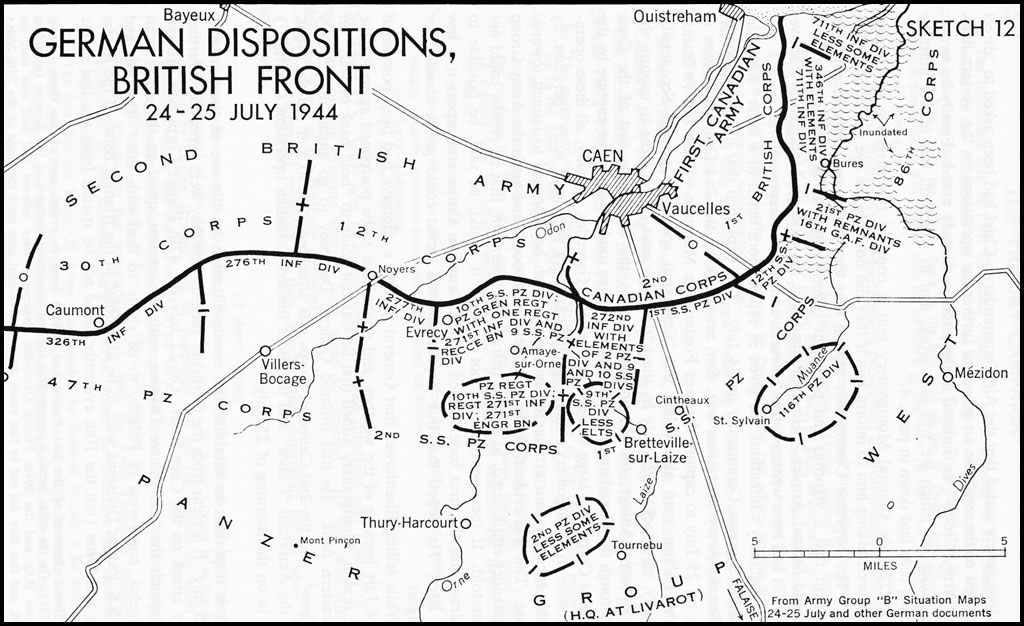No I am afraid that the situation at Caen was totally foreseen - while it was hoped that it could be captured there was a realistic expectation that it would not be
Montgomery's plans for CAEN on 15th May 1944 noted that Caen might not be taken
Bradley Wrote
"The British and Canadian armies were to decoy the enemy reserves and draw them into their front on the extreme eastern edge of the Allied beachhead. Thus while Monty taunted the enemy at Caen we were to make our break on the long roundabout road to a Paris.When reckoned in terms of national pride this British decoy mission became a sacrificial one, for which while we trampled around the outside flank, the British were to sit in place and pin down the Germans.Yet strategically it fitted into a logical division of labors, for it was towards Caen that enemy reserves would race once the alarm was sounded.”
I Corps Operation Order No. 1, WO 171/258.
'The task of 3 British Division is to capture CAEN and secure a bridgehead over the R ORNE at that place........Should the enemy forestall us at CAEN and the defenses prove to be strongly organized thus causing us to fail to capture it on D-Day, further direct frontal assaults which may prove costly will not be undertaken without reference to I Corps. In such an event 3 British Division will contain the enemy in CAEN and retain the bulk of it’s forces disposed for mobile operations inside the covering position. CAEN will be subjected to heavy air bombardment to limit it’s usefulness and to make it’s retention a costly business’
If anything stopped Caen from being taken it was 3 things
The Germans (damn their eyes) - principly the attack by 2 of the 3 Kampf Groups of 21st Panzer - 1 of which reached the sea (and seeing a billion ships and then seeing the afternoon glider drops begin to land behind them they pulled back) the other smashed into the Leading elements of the Brigade racing to Caen getting badly handled by the Fireflies of the Sherwood Forest Yeomonary
The 4 inland fortifications - Daimler, Hillman, Morris and Rover - which were more extensive than expected and in some cases took units originally intended to make the advance on Caen to reduce them instead.
Admiral King - when the d-day plan was expanded to include Utah and Sword Beaches the number of landing craft allocated was not quite enough (and this included delaying the invasion by a month in order to allow for more) - with King not bending on allowing any landing ships allocated to the Pacific being instead sent to the ETO.
And I know you have this fixation on maps etc and the belief that Monty could not read one (which is quite frankly ridiculous)
So here is a Map of Normandy - note the main rail and road LOC from Paris to Caen (the major hub in the region). And then from Caen out across the rest of the area.
Meaning any reinforcements are likely coming via Paris or from the East to Caen and then out to where ever. But threatening or capturing Caen draws the mobile German forces to it - like moths to a flame.
So while the losses of Logistical experts might have impacted the subsequent build up, the chances of 3 Division / I Corps capturing Caen within the first 24-48 hours - knowing what we know now are virtually zero and the loss of said men had no impact on this.




